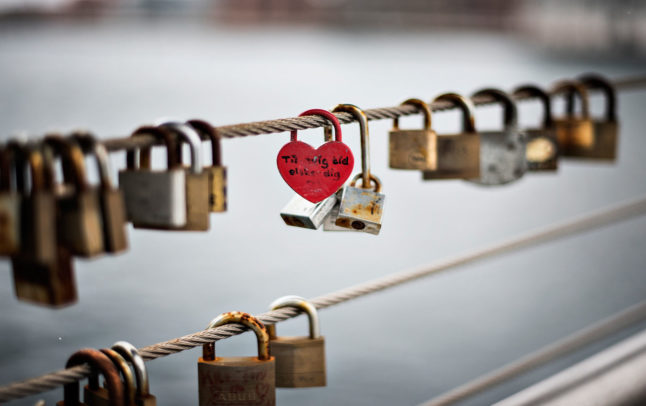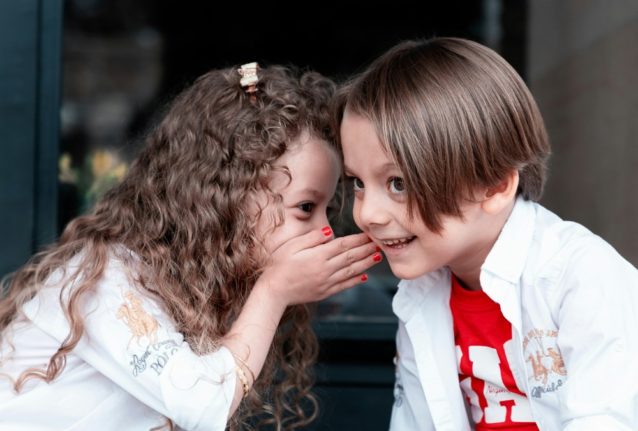Jeg har sommerfugle i maven
The feeling of excitement and anticipation when you set eyes on your crush is the same for Danes as it is for English-native speakers, it seems: the phrase “having butterflies in the stomach” – or sommerfugle i maven – is widely used in Denmark too.
Jeg er vild med dig
Before you reach the being-in-love part of a relationship, you may find yourself being vild med someone.
This translates directly to “I’m crazy about you”, but it can have a somewhat softer meaning in Danish, depending on the context.
You can tell a friend jeg er lidt vild med Christian if you have a crush on Christian, but if you go over to Christian and say jeg er vild med dig, you’ll probably embarrass Christian unless you pick your moment wisely.
READ ALSO: READERS REVEAL: What are the barriers to a successful relationship with a Dane?
Jeg tænder på dig
If you want to take things up a notch from hand-holding, you might want to drop this one into conversation with your beau.
At tænde literally means “to switch on” in Danish, but in the context of love, it means “to turn on”.
Be warned though: if you are not charming enough, the object of your affections might find they tænder af (get turned off) by your advances.
Du har smukke øjne
A stone-cold dating classic or the cheesiest line of all time?
Saying “you have beautiful eyes” could bring a smile to your Danish sweetheart’s face. But use it appropriately: Danes do not like superficial compliments or empty statements of any kind. Flattery falls into this category.
Like most of the lines in this list, context is everything and you should only say this phrase to someone with whom you already have an established relationship.
If you do know each other well, you can replace øjne (“eyes”) with any other part that you find particularly beautiful. Ahem.
Jeg er forelsket i dig
Forelsket means “to be in love with” and is an elegant way of telling someone you’ve fallen for them, or have a crush on them.
It’s both romantic and concise – what’s not to like?
At forelske sig i is a reflexive verb meaning to fall in love with something or someone. The perfect Valentine’s vocabulary.
Vil du være min kæreste?
In the modern world it might not always be clear where you stand with your lover in terms of exclusivity.
To clear things up and move to the next level by becoming an official girlfriend or boyfriend you can ask this question, which means “Do you want to be my boyfriend/girlfriend?”
The gender-neutral noun kæreste means both girlfriend and boyfriend, so at least you won’t have to worry about grammar when about to pop the big question.
Hopefully, they won’t say jeg leder ikke efter noget seriøst lige nu (“I’m not looking for anything serious at the moment”).
Jeg elsker dig
The most romantic line of all, “I love you” should be kept firmly in your locker if you are on a Valentine’s first date.
On the other hand, what better moment than February 14th to break out the big one and tell your kæreste that you are håbløst forelsket (hopelessly in love) with them?



 Please whitelist us to continue reading.
Please whitelist us to continue reading.
Member comments